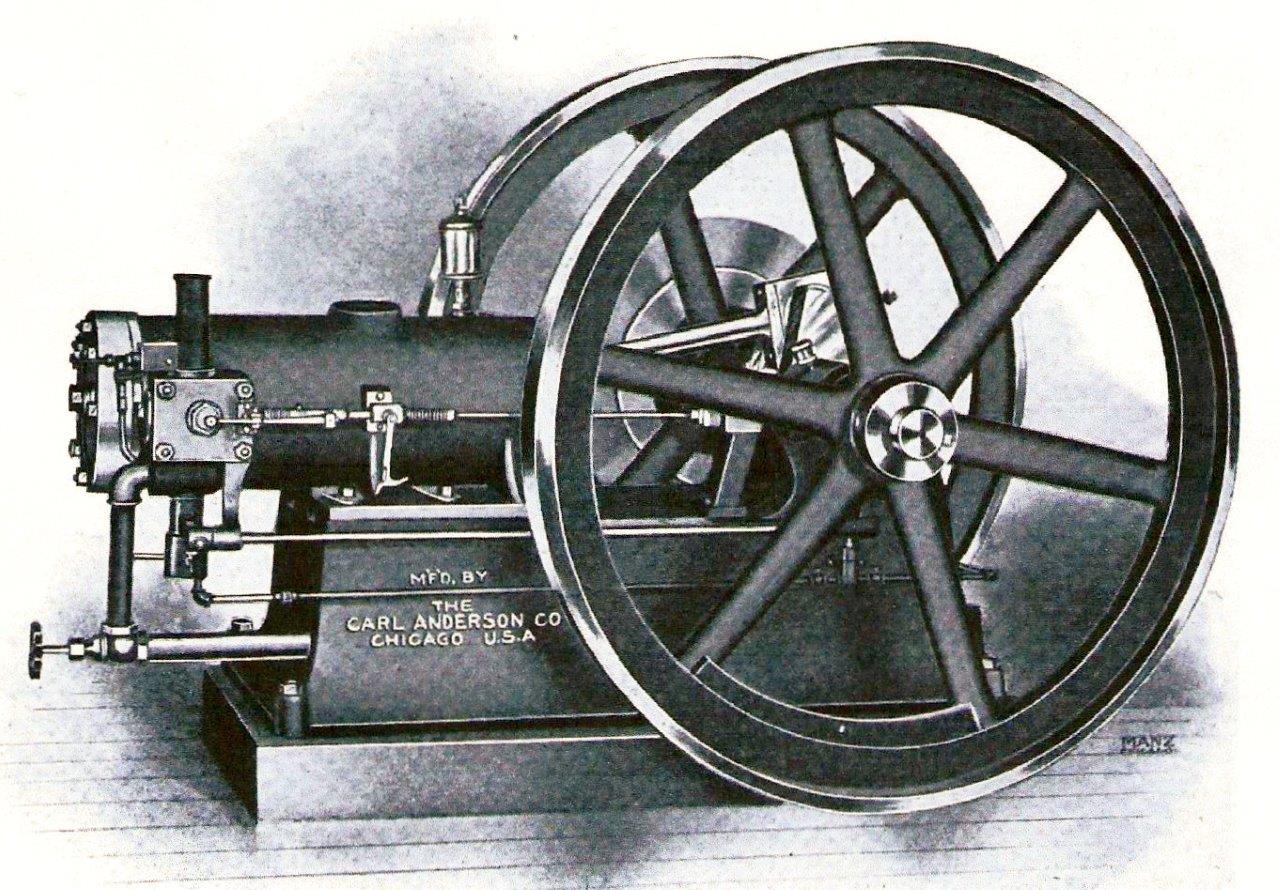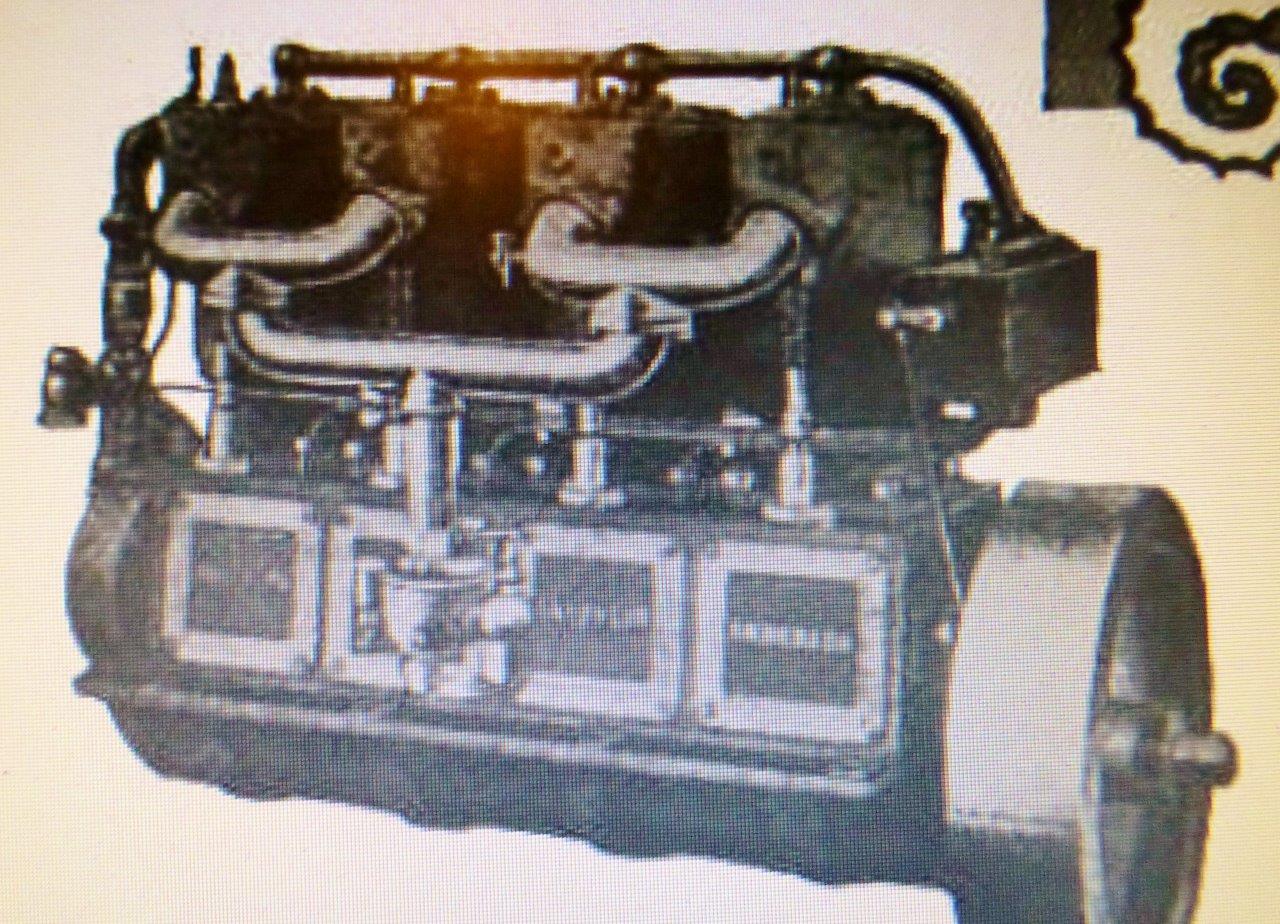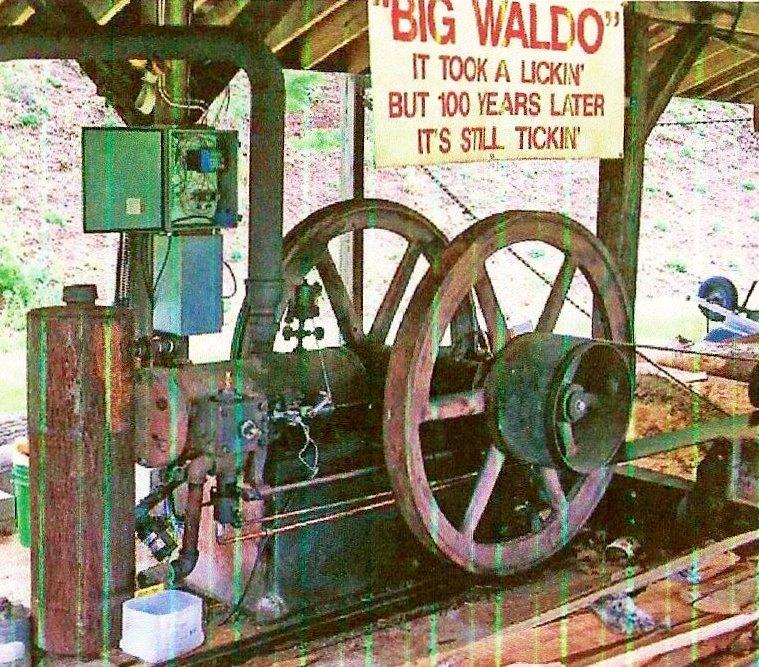
May 2016
An Engine Named Gus
Part 2: Gus and His Builder
By Paul Harvey
Last month, The Flywheel
introduced Gus and described where he had previously lived and how he
came to Coolspring. That was back in 1971! His name came from his
designer, a young Swedish immigrant named Gustaf Joranson. That
article detailed many of Gus's unique features and designs. Mr.
Joranson soon found employment in
Carl Anderson was born in
Photo 1 shows the Carl Anderson engine, circa 1902. Note the very pleasant lines and proportions. The mechanism on the side is smooth and blends into the overall design very well. The flywheel size is "just right" and complements the engine, giving a pleasing appearance. The museum's Gus, although a vertical, shares the same pleasant design.
The first mention of the Carl Anderson
Company was found in Gardner Hiscox's 1898 edition of Gas, Gasoline,
and Vapor Engines. Unfortunately there is no illustration or
description of the engine. In 1904, the
A 1902 advertisement is shown in Photo 2. Here one sees the Carl Anderson engine listed as the "GUS." Note that it is termed "A Model of Perfection." It appears that the two names were used interchangeably. This dual usage was found in many references.
Noted in a 1905 issue of The Gas
Engine, the Carl Anderson Company, builders of the Gus engine, moved
into a new and larger shop located at Huron and Kingsbury Streets in
The Journal Gazette of
Another 1906 article, found in Motor
Boat, announces that W.C. Anderson, son of Carl Anderson, was
appointed to organize the Chicago Boat Show. This was a large week-long
event with makers from all over the country displaying their finest and
most modern engines and boats. The Anderson Engine Company of
Shelbyville had an exhibit as did the Carl Anderson Company of
The International Motor Cylopedia
of 1908 announced that the Anderson Engine Company of
It is interesting to find a 1911 note in
Motor Boating stating the Anderson Engine Company of Shelbyville
shipped nine marine engines, ranging from 2½ hp to 8 hp, to
Perhaps since W.C. Anderson incorporated in 1908, his father must have decided that incorporation was the best move for his own company. A 1913 issue of Industrial World states that the Carl Anderson Company incorporated with a capital of $10,000. Carl Anderson would be president, Silas Howe would be vice president, and Enoch Peterson would be secretary-treasurer. They planned to build gas engines, generators, and general machinery.
Motor Boating, in 1914, states the Anderson Engine Company of Shelbyville has introduced a new line of heavy-duty four-cycle marine engines. Note the 75 hp model shown in Photo 5. This line continued to expand, eventually building a 150 hp six-cylinder size. Motor Boating continues in 1915 to state that the Anderson Engine Company is working at full capacity to keep abreast of the demand. Their most popular model is a four-cycle, four-cylinder 24 hp engine that sells for $660.
A 1918 issue of Iron Trade Review
sadly announces that Carl Anderson died in
A very interesting article was found in
the December/January 2010 issue of Gas Engine Magazine. It
featured "Big Waldo," a 15 - 20 hp horizontal Carl Anderson engine. The
engine was purchased by the Waldensians, a conservative religious order
that dated from 46 AD. Persecution in
I wish to acknowledge the following sources of information that I used to make this article possible:
Newspapers.com
Ancestry.com
Gas Engine Magazine, December/January 2010
with
permission of the editor, Richard Backus
Next month, I will bring you back to

Photo 1: Carl Anderson engine circa 1902

Photo 2: Gus 1902 ad

Photo 3: Gus saw rig 1905

Photo 4: 37½ hp four-cycle

Photo 5: 75 hp Anderson marine engine

Photo 6: "Big Waldo" 15 - 20 hp Carl Anderson engine